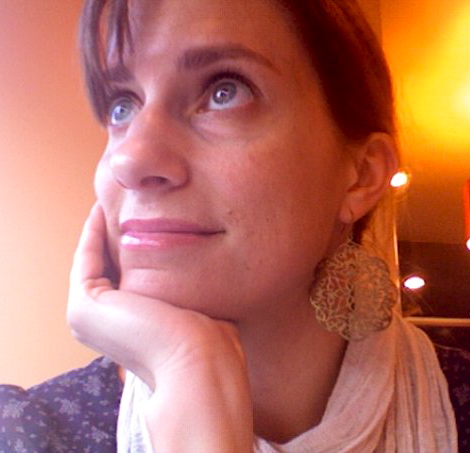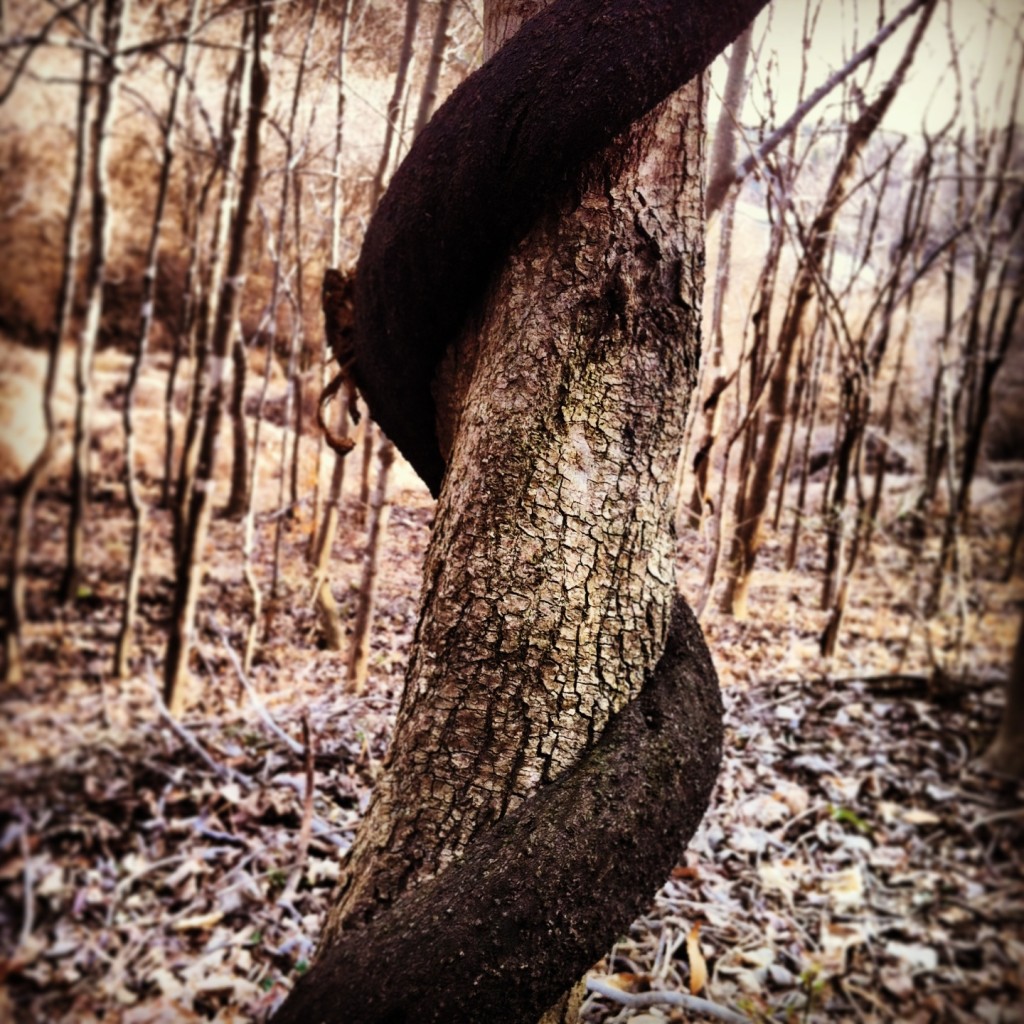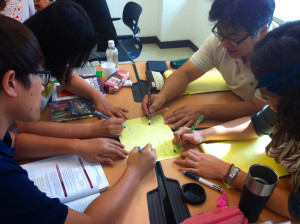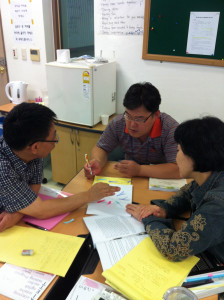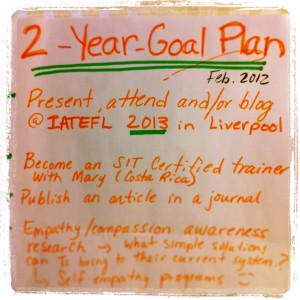
Gallery Walk: Collaborative, Creative, & Versatile – Josette LeBlanc
You walk into an art gallery where mesmerizing and perplexing pieces of art await your viewing. As you walk to each piece, your curiosity is ignited. You stop at one. If you are with a friend, you discuss the artist’s possible intention, as well as the meaning behind the creation. Then you move on to the next work of art, and follow the same process.
Your classroom is also a gallery
You can also turn your classroom into a gallery by taking your learners on a “gallery walk”. A gallery walk is a versatile collaborative and cooperative class activity, which can be done in small groups or as a whole class. The basic premise is that learners put up their “art” (short stories they have written, posters they have created, questions they are posing…) at “stations” (desks, walls…), and everyone else has a task to accomplish while viewing the work.
When we think of asking students to work in groups we often think of groups of four or five working together at a desk, or maybe we think of group competitions. Gallery walks ask learners to step away from their desks to share information (language) in collaborative and cooperative ways.
Let’s visit a few of these galleries. Please remember that in these galleries, you are encouraged to touch the art.
Gallery walks for ice-breakers
This is one of my favorite ways to use a gallery walk. You may know the popular activity, Two Truths, One Lie where learners need to share two truthful facts about themselves and one lie. It’s everyone else’s job to find out which one is the lie. On the first day of class, I like to ask my learners to write their truths and lies on a colorful piece of paper. They then paste their Truth/Lie posters on the wall. Next, I turn on some background music, and with pens in hand, learners move from poster to poster putting check marks next to the sentence they think is a lie. Groups or pairs often end up meeting at a poster where they naturally begin discussing what the lie might be. When they’ve put all their check marks, it’s finally time for the artists to reveal their lies. Everyone is eager to find out if they guessed correctly.

Gallery walks for working with texts
This next example is a small twist on the traditional cooperative reading strategy called, jigsaw. Each group is assigned a different part (ie: part 1, part 2, part 3…) of the same article or story (ie: Story A), and they are responsible for creating a poster that represents that part. They have creative freedom over how they want to represent the text (ie: charts, drawings, words, no words…). Before making the poster, learners need time to individually read their assigned text (ie: part 1), and then discuss it with their group. Once they have a solid understanding, they start designing the poster. When each group has finished their posters, it’s time for a gallery walk. They put up the posters, and each group walks around trying to understand the details of what came before and after their part of the text. Groups then explain their posters, just as an artist would explain their work of art. By doing this, everyone gets the full picture. (See this post I wrote a few weeks ago about doing this activity with my class.)

The same can be done with everyone reading the same text. Each group will have a very different artistic perspective on the text from which other groups will learn. Ask students to find similarities and differences between the ways they chose to represent the text.
Gallery walks for discussions
As a pre-reading task, I like to put up different quotes that relate to the topic. In groups of three, learners discuss what the quotes mean and if they agree with it. For example, a few weeks ago we read a text about heroes. This is one of the quotes I put on the wall:
“A hero is no braver than an ordinary man, but he is braver five minutes longer.”– Ralph Waldo Emerson
Of course this could be done at any point in the lesson for any type of language focus. Instead of quotes, you could put pictures or words. Teachers can put up questions or learners can ask their own. The possibilities for discussions and sharing in a gallery walk are endless.
Make gallery walks your own
This is just the tip of the iceberg when it comes to gallery walks. You can do anything you want with them. Just remember the basics: learners work together to create and contemplate a “piece of art”, and artists move from one work of art to the other in order to accomplish a task. With this in mind, you can make your own creatively collaborative classroom. ~ Josette LeBlanc
Connect with Josette and other iTDi Associates, Mentors, and Faculty by joining the iTDi Community. Sign Up For A Free iTDi Account to create your profile and get immediate access to our social forums and trial lessons from our English For Teachers and Teacher Development courses.
Like what we do?
Become an iTDi Patron.
Your support makes a difference.

